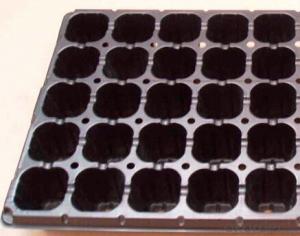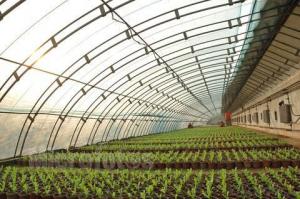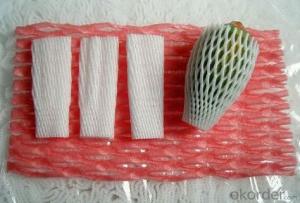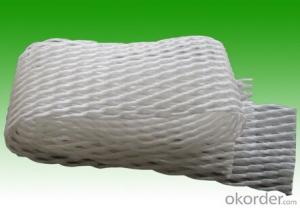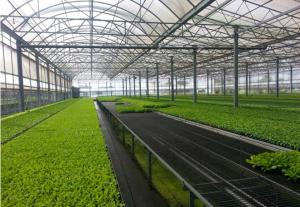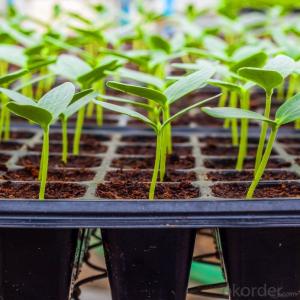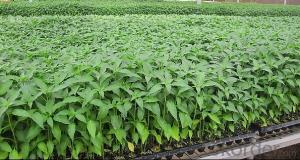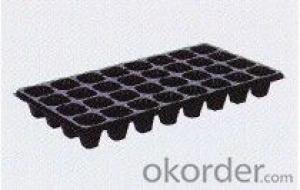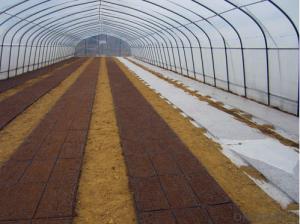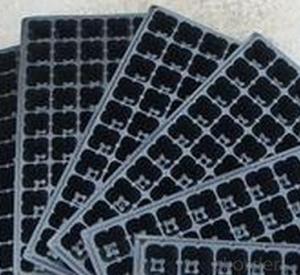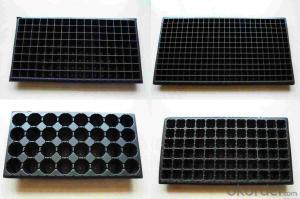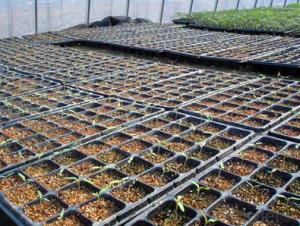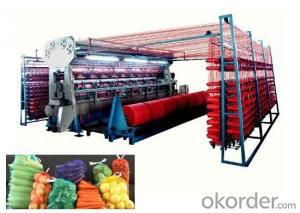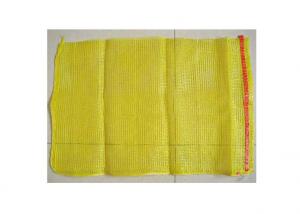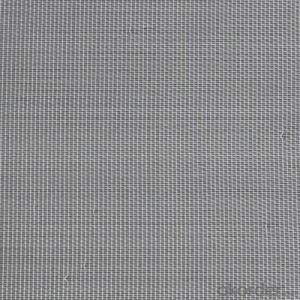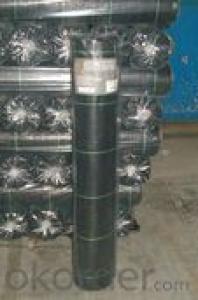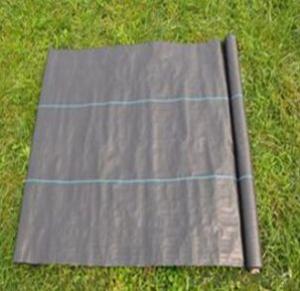Plastic Nursery Seedling Trays for Agriculture
- Loading Port:
- Ningbo
- Payment Terms:
- TT OR LC
- Min Order Qty:
- 10000 pc
- Supply Capability:
- 10000000 pc/month
OKorder Service Pledge
OKorder Financial Service
You Might Also Like
Product Description
PLASTIC SEEDING TRAY
---Cheap Factory Price
---Different Cells of Trays Available
---Good Intensity & Water Retention
---Can Customize The Tray As Your Request
ADVANTAGES OF OUR PLASTIC SEEDLING TRAY
1,Our seeding trays are with good intensity, strong enough and suitable for long distance transportation and mechanization of transplanting and they have good abilities of water retention.
2, If our seed tray don’t meet your request , we can also develop new mould for the seed tray you need .
3,Our seeding tray is high quality with competitive price ,and they are Eco-Friendly , Recyclable and Reuse.
4,Fast delivery : we can finish your order with in 10-20 days according to your order quantity .
- Various thickness
We can offer thickness from 0.6mm-1.9mm, helping maximize the potential of different usages- disposable and multiple use.
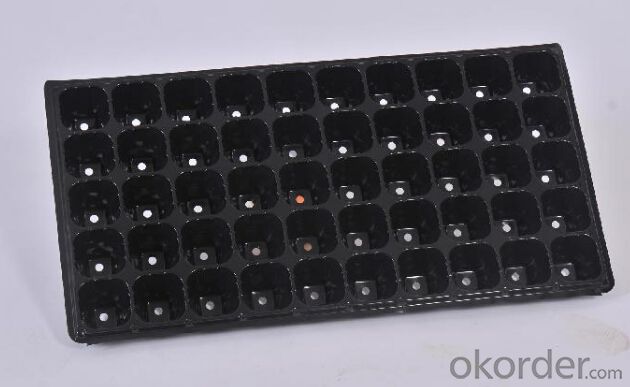
Specifications
Nursery Seedling Tray For Sale
1.for 10 years
2.size and color:black
3.protect vegetables nursery
FAQ:
Can it be customized?
We have quite different models of seeding trays, such as the 32 cells, 50 cells,72 cells, 98cells, 105 cells, 128 cells ,200 cells . And they are made of HIPS or PVC , being used extensively in horticulture field , like cultivating Propagating Vegetable , flowers and other plant from seed.
- Q: When I bought a cage it had some toys 2 plastic perches and a swing I threw everything out but the swing and perches and I disinfected them I was wondering are the perches ok for my bird?
- Plastic perches are no good . they are to smooth, you need to get some wood ones or even tree branches , if possible from Apple .or Willow trees. Plastic perches do not allow the birds to grip correctly and can harm the feet , wood perches and branches are more natural, for your birds to get their claws around. Breeder
- Q: What are the different types of plastic livestock water tanks available?
- There are several different types of plastic livestock water tanks available, including polyethylene (PE) tanks, polypropylene (PP) tanks, and thermoplastic tanks. PE tanks are the most common and economical option, known for their durability and resistance to corrosion. PP tanks are often used for more specialized applications, as they are exceptionally resistant to chemicals and high temperatures. Thermoplastic tanks, on the other hand, offer a high level of strength and impact resistance, making them suitable for rough environments. Ultimately, the choice of plastic livestock water tank depends on the specific needs and requirements of the livestock and the environment they are kept in.
- Q: How do I plant ground cover?
- To plant ground cover, start by preparing the area by removing any weeds, rocks, or debris. Then, loosen the soil and add organic matter to improve its fertility. Next, choose the appropriate ground cover for your specific needs and environmental conditions, considering factors like shade, moisture, and foot traffic. Dig small holes or trenches, spacing the plants according to the recommended guidelines. Place the ground cover plants into the holes, ensuring the roots are covered with soil and firming it gently around them. Finally, water the newly planted ground cover thoroughly and provide regular maintenance like weeding, watering, and fertilizing as needed to ensure healthy growth and spread.
- Q: How do I prepare the soil for ground cover?
- To prepare the soil for ground cover, start by removing any weeds, rocks, or debris from the area. Loosen the soil using a garden fork or tiller to a depth of 6-8 inches. Next, amend the soil with organic matter, such as compost or well-rotted manure, to improve its fertility and drainage. Rake the soil smooth and level it before planting the ground cover.
- Q: How are plastic netting and mesh used in agriculture?
- Plastic netting and mesh are commonly used in agriculture for various purposes such as crop protection, support, and containment. They are utilized to create physical barriers that shield plants from pests, birds, and other animals, preventing crop damage. Additionally, plastic netting and mesh are employed as trellises or supports to guide the growth of climbing plants, ensuring proper development and preventing them from collapsing. These materials can also be used to confine livestock or create enclosures for poultry, facilitating better management and control within agricultural operations. Overall, plastic netting and mesh provide practical solutions to enhance crop productivity and animal husbandry in the agricultural industry.
- Q: 3 different recycling numbers to name 3 different plastics.How is it made?What are the differences between different plastics?Another point of interest?
- till at present plastics have been created from Petroleum. Then a pair of years in the past Dow chemical presented a clean plastic created from corn. it extremely is a bioplastic. there is quite some experimentation occurring interior the analyze of such techniques. you would be listening to lots approximately bioplastics as they're seen eco-friendly techniques. you will see them on packaging and such! Bioplastics are created from plant materials which includes hemp oil, soy bean oil, corn starch, and now corn. How? The petrochemical resin is replaced by potential of a vegetable or animal resin.
- Q: I am in Wells, Maine and I was wondering where I could buy 2 oz. Plastic cups with lids, the ones used for jello shots. I need them for New Years and I haven't been able to ind any. Thanks in advance
- Smart Final
- Q: Can agricultural plastic be used for aquaponics?
- Yes, agricultural plastic can be used for aquaponics. Agricultural plastic, such as polyethylene or polypropylene, can be utilized to construct various components of aquaponics systems like grow beds, fish tanks, or even as liners for containment. This plastic is durable, water-resistant, and can effectively hold water and support plant growth, making it suitable for aquaponics applications.
- Q: Are there any ongoing research projects on agricultural plastic products?
- Yes, there are several ongoing research projects focused on agricultural plastic products. These projects aim to explore sustainable alternatives to traditional plastic materials used in agriculture, improve recycling and waste management practices, and develop innovative solutions to reduce the environmental impact of plastic in the agricultural sector. Some specific areas of research include biodegradable and compostable plastics, bio-based materials, and advanced recycling technologies.
- Q: My family is very eco friendly. so my mom wanted me to get tampons with cardboard applicators , and i said i'd try them. so my question is.. is inserting a cardboard applicator any harder or different than inserting a plastic applicator? if so how?
- Plastic is more comfortable to insert.. Buutt cardboard isnt so bad. you may want to try to put sumthing on it like lube before inserting for comfort....goodluck with tht(;
Send your message to us
Plastic Nursery Seedling Trays for Agriculture
- Loading Port:
- Ningbo
- Payment Terms:
- TT OR LC
- Min Order Qty:
- 10000 pc
- Supply Capability:
- 10000000 pc/month
OKorder Service Pledge
OKorder Financial Service
Similar products
Hot products
Hot Searches
Related keywords
